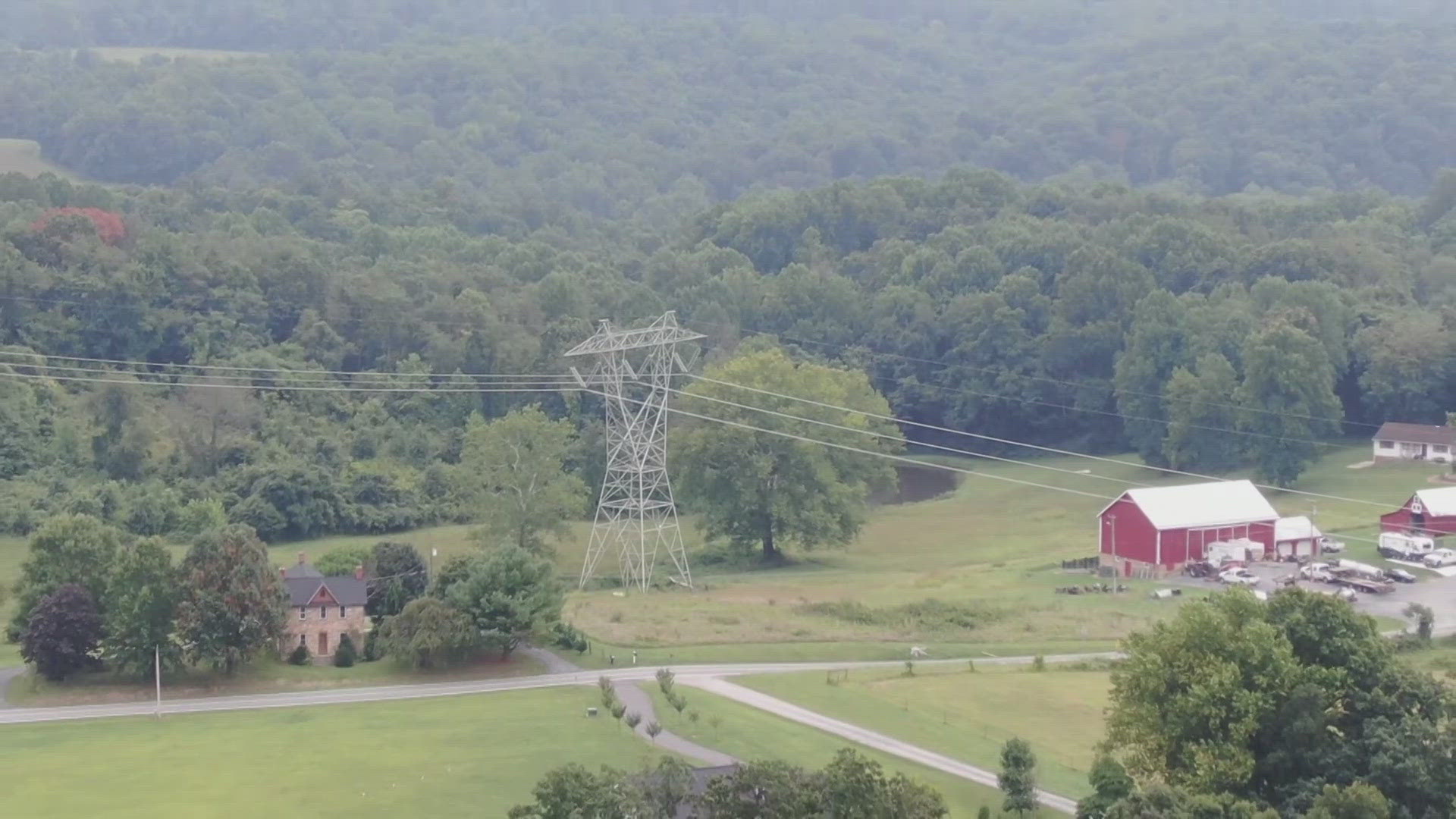ADAMSTOWN, Md. — Tariq Alvi says he dreamed for 50 years of owning land that would serve as a sanctuary and refuge for his family.
The dream took on more significance as Alvi's autistic son grew into a 22-year-old who will need lifetime protection and care.
In 2022, when Alvi found a 67-acre wooded hideaway near Sugarloaf Mountain in Frederick County ─ property in a restricted conservation zone ─ he knew his dream of a safe space for his family had come true.
He bought it.
Now a controversial 70-mile-long proposed powerline project threatens to put towers and wires through a swath of Alvi's land.
He's one of thousands of Maryland landowners turning out to a series of recent information sessions hosted by the transmission line developer to fight.
“I'm devastated," Alvi said.
"You dream about this, this sort of place for 50 years. You get it, and then a company ─ a for profit company ─ comes and condemns your property. No!”
The proposed 70-mile transmission system is called the Maryland Piedmont Reliability Project. Several proposed routes cut across four Maryland counties from near the Pennsylvania line to the Potomac River.
A New Jersey company called PSEG has the $424 million contract to build it for PJM, the company that operates the electricity grid in 13 states.
It’s been a rough start for PSEG, which has hosted standing room only public meetings attended by outraged residents.
Many are terrified by a statement on PSEG’s website saying “eminent domain” could be used to seize property if voluntary fair-market-value deals can’t be reached.
But the role of power-gobbling data centers in Northern Virginia as well as and a giga-watt-scaled data complex under construction in southern Frederick County is also attracting attention.
Maryland’s Office of the People’s Council, which represents the interests of ratepayers, reports that “data centers are largely ─ if not exclusively ─ responsible” for the powerline need.
OPC cites PJM documents that say lines “directly serving data center loads,” are no longer enough.
Susan Beuhler, a spokesperson for PJM points out “It’s more than just data centers. It’s EV (electric vehicles), manufacturing and other growth.”
PJM also says the grid needs to backfill delivery as old coal burning power plants like Brandon Shores in Maryland go off-line to meet carbon reduction goals.
Meanwhile, Maryland is so power hungry it imports 40% of its consumption.
"There is no debate, Maryland needs energy infrastructure. Maryland needs generation to produce power for and transmission to move power to the customers that need it," said a written statement from PJM.
Ratepayers should not be responsible for financing the Maryland Piedmont Reliability Project, according to Steve Black, president of the Sugarloaf Alliance, a conservation organization.
“The MPRP project is a giant extension cord for the data center industry," Black said.
"That's who's going to use the power that's going to go through this line that is going to destroy homes, break up, farms, ruin businesses along its path, not to mention the ecological impact of it."
At public meetings, many residents ask why PSEG does not expand powerlines in existing right of ways. PSEG says it’s considering options.
It will be up to Maryland’s Public Service Commission to approve the project, but the agency has not yet received a formal application.
Frederick County’s state legislative delegation has issued a letter opposing the powerline project. The letter calls the disruptions to people and businesses “unacceptable.”
Power line developers hope to have the 500 KV project on line by June of 2027.
Opponents are planning a protest demonstration at a “Maryland Data Center Summit” hosted by the Maryland Tech Council on August 29 in Frederick.

